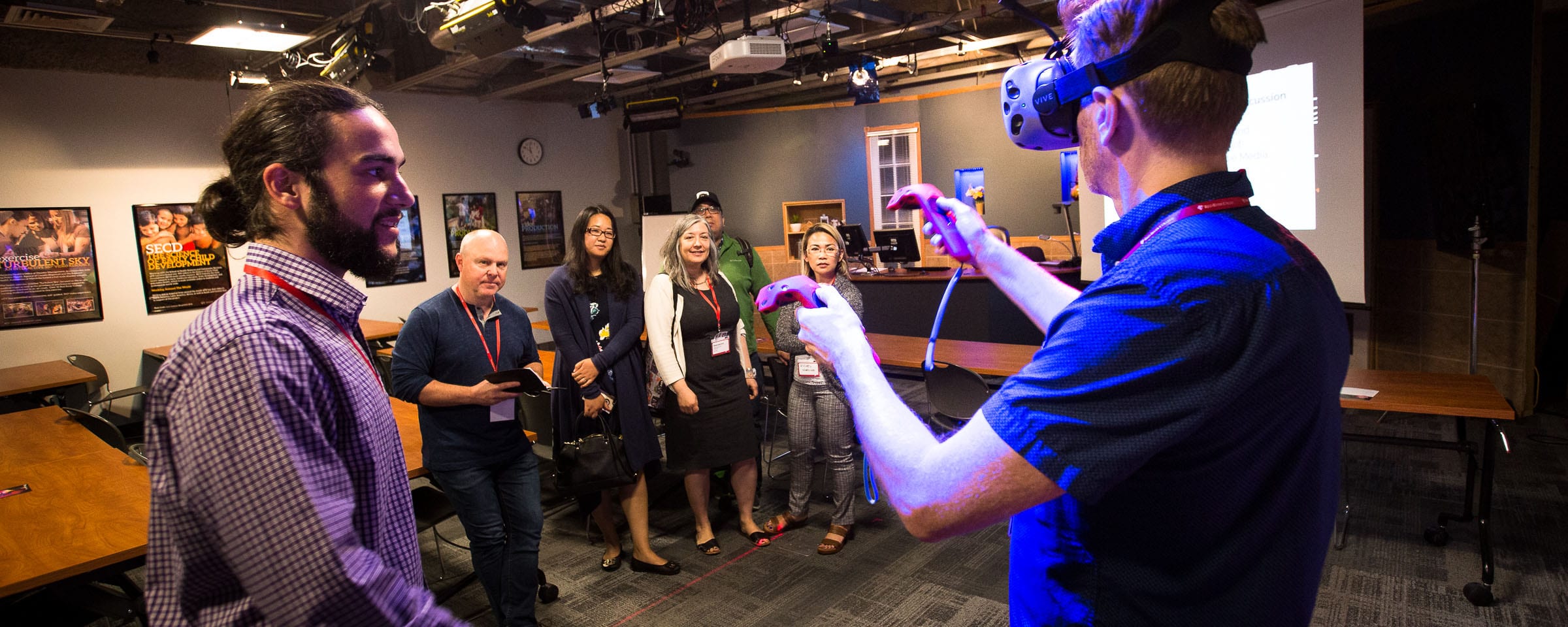Microvideo at Red River College
Principles of Microvideo
 Video in teaching and learning is becoming more and more important. We only need to look at YouTube to see the huge proliferation of online video training pieces – both good and bad. The problem we face is how to help the hundreds of instructors at our large College develop the videos they need without massive investments in production facilities.
Video in teaching and learning is becoming more and more important. We only need to look at YouTube to see the huge proliferation of online video training pieces – both good and bad. The problem we face is how to help the hundreds of instructors at our large College develop the videos they need without massive investments in production facilities.
The TLTC has been working towards the concept of microvideo as a sustainable solution for our College’s instructors to produce simple and effective video. Here are the principles that we developed to guide instructors in creating these microvideos:
1. Single Topic Short Videos
People have short attention spans. Long videos will lose their attention. Break your videos into small chunks of 5 minutes apiece that cover a single topic.
2. Many Takes One Shot
There can be many takes, but the final version must be one shot. If there is a problem during a take it is fixed by doing another take until it’s correct.
3. No Editing
The video will not need to be edited once it is shot – video and audio must be recorded at the same time. If it’s not right, reshoot.
Do not put info into the video that will likely change. There should be no references to the textbook used, the course the content is going into (because it could be repurposed for another course), the sequence of the videos (don’t refer to yesterday’s video, make each video standalone), the module or lesson that the content is going into (because its location could change), or the day on which the video is being shot.
4. Plan Ahead
Planning saves time. Prepare an outline and practice out loud what you’re going to record before the shoot. Try to shoot more than one video at a time. Find a time and location where you will be undisturbed. If you need help from other people ask for it well in advance.
Types of Microvideo
| Type of Video | Details | Ideal Length | Resolution | Resources Required |
| Talking Head | Introduction or brief lecture. Many takes, single shot. No editing. | ≤ 5 minutes | ≥ 320×180 or higher | webcam & mic, adequate lighting, quiet space |
| Screen Capture | Demo of actions on a computer screen – single concept. No editing. | ≤ 5 minutes | ≥ 640×480 or higher | Screen capture software (camtasia) & mic, quiet space |
| Interactive Flash Video | Built using off the shelf tools. No customization. | ≤ 5 minutes | ≥ 640×480 | relevant software, mic, quiet space |
| Document Camera | Single concept demo of ‘thing’ based operations – math, tools etc. Shot from above via camera and stand. No editing. | ≤ 5 minutes | 1280×720 (720p) | document camera & micadequate lighting, quiet space |
| Location Shoot | Single fixed shot or handheld camera while narrating. No editing. | ≤ 5 minutes | 1280×720 (720p) | HD webcam, wireless mic, adequate lighting, quiet space |
Following these principles will help you to create simple but effective videos that you can put online for your students. It’s easy to get distracted from true microvideo, however. For example, if you’re creating longer videos (say 10 minutes), once you hit that 9 minute mark and make a mistake it becomes a much harder thing to say that you’re going to restart the video from scratch. Soon you’ll start thinking that some quick editing will solve your problem, and then that turns into a much longer process overall. Sticking with short videos makes a big difference in executing the “many takes one shot” principle.
If you have any questions about the technologies we use, please contact LEARN Support at learn@rrc.ca for more information.
I’ll post more soon about some of the solutions we’re looking at to host video in the College.
Attached file: Microvideo Planning Document v2
